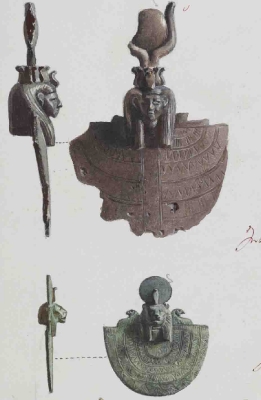To search the RPR site click here
How many objects?
The number of objects there were in Pitt-Rivers's second collection post-1880
In 1999 Thompson and Renfrew estimated that there were 'probably something over 10,000 objects' recorded in the volumes. This is not a bad estimate but preparation of a detailed digital catalogue has allowed for a more accurate count [1]:
Volume 1: 3533 objects listed
Volume 2: 6966 objects listed
Volume 3: 2955 objects listed
Volume 4: 681 objects listed
Volume 5: 1184 objects listed
Volume 6: 696 objects listed
Volume 7: 674 objects listed
Volume 8: 832 objects listed
Volume 9: 2898 objects listed
Giving a total of around 20,419 objects in Pitt-Rivers' second collection.[1] This compares to 19,606 objects in the Pitt Rivers Museum founding collection (calculated 24 May 2010).[2]
Please note that the this figure is a count only of those items which appear in the catalogue of the second collection, it does not contain all the items known to have been displayed at Farnham Museum. For example all the excavations models and models of Celtic crosses etc known to have been made for Pitt-Rivers and displayed at Farnham are not included. Neither are the items transferred from the founding collection when it was at South Kensington Museum for display at Farnham (for example, many carvings from Brittany). Another excluded set of objects are the comparative drawings done by 'savages ... and untaught children and adults from the neighbourhood'. [le Schonix, 1894: 168]
In addition it is known for sure that it does not contain all the items which Pitt-Rivers owned after 1880. Pitt-Rivers' 1883 publication about 'Primitive Locks and Keys' contain reference to many items in 'his collection' (which of course at that time could be either in the founding or second collection) none of which appear to be listed in either collection. Indeed none of the items listed as being in is collection in that sources have been matched completely. It is clear that many of them were acquired during trips to Egypt and to Germany after 1880, holidays during which the second collection catalogue lists many objects as being acquired so the omission of the locks seems even more peculiar.
Another example might be the fact that in 1884, during an address delivered to the Annual Meeting of the Dorchester School of Art, February 1884, he exhibited four objects, 2 made by Zulu people and 2 from the Northwest Coast (of North America). (See here for the details of this address.) However, no similar objects are listed in the catalogue of the second collection and these items either were acquired before 1880 but not listed in any catalogue then and not part of the founding collection, or acquired after 1880 but not listed in the catalogue.
Notes
[1] Please note that there are a very small number of objects that appear to have been listed twice, so this might be a very small overestimate (at the most, 100 objects over). In addition there are a very small number of entries which do not provide an accurate count of the number of objects included, for these an estimate has been included which might, of course, be wrong.
[2] Note that the Pitt Rivers Museum at Oxford identifies previously unaccessioned objects from the founding collection all the time and therefore the total number of objects in this collection will continue to increase (which is why the figures are dated). Between April and May 2010 for example one more object was identified.
Bibliography for this article
Pitt-Rivers, A. 1884 'Address delivered at the Annual Meeting of the Dorchester School of Art, February 1884' Dorset Chronicle, February 7 1884 (pagination unknown)
Thompson, Michael and Colin Renfrew. 1999. ‘The catalogues of the Pitt-Rivers Museum, Farnham, Dorset’ Antiquity vol. 73 (no. 280) pp. 377-392
AP, 20 April 2010




